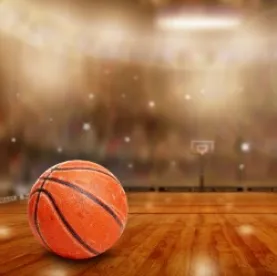Who owns a celebrity’s tattoo, and the extent to which that tattoo can be displayed in a commercial context, raises right of publicity, copyright, and trademark issues. A district court in the recent Solid Oak case found no copyright infringement where a video game incorporated tattoos as inked on professional NBA players. Solid Oak Sketches, LLC v. 2K Games, Inc., No. 16-CV-724-LTS-SDA (S.D.N.Y. March 26, 2020).
This case considered use of tattoos as part of lifelike depictions of professional athletes in video games, however the ruling easily relates to individuals with tattoos who commodify their likeness such as celebrities, social media influencers, and musicians.
In 2016 Solid Oak Sketches, LLC filed a copyright infringement suit against 2K Games, Inc. and Take-Two Interactive Software for the use of copyrighted tattoos on NBA players Eric Bledsoe, LeBron James, and Kenyon Martin in the NBA 2K series games. Solid Oak had an exclusive licensed to each tattoo, but did not hold any publicity or trademark rights to the athlete’s likeness.
The NBA 2K games are designed to accurately simulate the look and feel of an actual NBA game, including details of the stadiums, referees, team uniforms, and the likeness of the players themselves, which includes their tattoos.
The Players had given their right to license their likeness to third parties to the NBA, and the NBA granted this license to Take-Two. Solid Oak argued; however, that the NBA violated their exclusive right to the underlying tattoos on the players, and infringed their copyright by using them in the game without a license.
Take-Two secured a victory when the district court granted its motion for summary judgment and dismissed the action on the grounds of de minimis use, implied license, and fair use. As always, context and extent of use matter.
First, the use of the tattoos in the NBA 2K games was de minimis. During average game play, it is unlikely that the players with the subject tattoos would even be featured. From over 400 available players, the tattoos were only depicted on three players. Even when these players appeared in game play, the tattoos appear smaller than their actual size in real life, indistinct, and are obscured by the players quick movements in game play.
Second, there was no copyright infringement because Take-Two had an implied license to use the tattoos as part of the players’ likeness. The tattoo artists had granted the players nonexclusive licenses to use the tattoos as part of their likeness, prior to granting any rights in the tattoos to Solid Oak. The tattoos were each created by the individual artists at the player’s request, the tattoo artists then inked the players skin with the designs, and the artists intended the players copy and distribute the tattoos as elements of their likeness, fully knowing the players were likely to appear in public, on television, and other forms of media. The court held that because the players had an implied license to use the tattoos as a part of their likeness, and Take-Two had been granted a license to use the players likeness in the NBA 2K games, there was no copyright infringement.
Lastly, use of the tattoos on the players in the games was protected by fair use. The use of the tattoos in the video game was only to accurately depict the likeness of the players. The tattoos were also smaller than in real life, seen only infrequently during game play, and comprised only a minute fraction of the total game composition. Additionally, the artists who created the tattoos declared that the tattoos were not based on unique or expressive features, but copied common tattoo motifs. The court also found that Take-Two’s use was not likely to have an impact on the overall market for tattoos. Weighing all these factors, the court held use of the tattoos in NBA 2K video games was fair use.
The decision provides helpful guidance to assess risk and clearance strategies when considering use of a celebrity’s image and likeness in any commercial context when that celebrity has tattoos that will be depicted in the end product.





 />i
/>i

